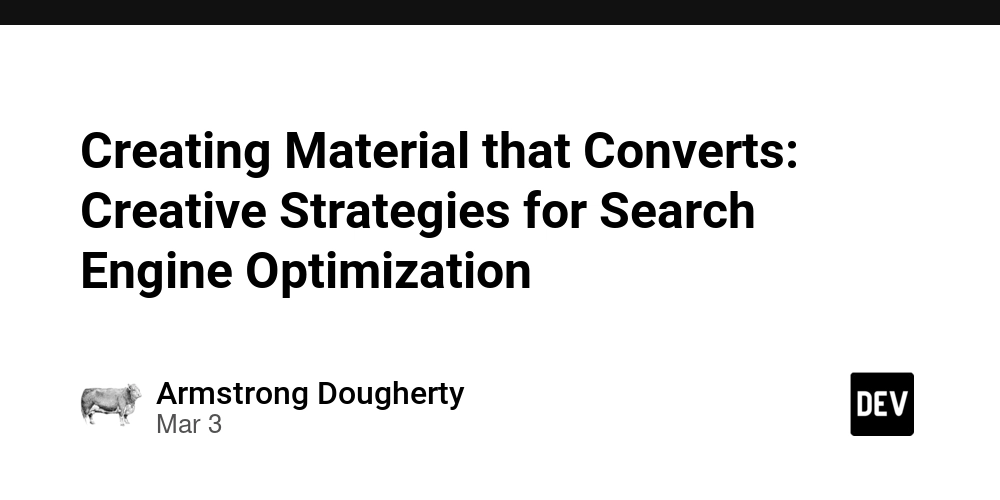Creating Material that Converts: Creative Strategies for Search Engine Optimization
In the current digital landscape, having a website that stands out is more important than ever. However, visual appeal alone is not enough to drive visitors and conversions. This is where the dynamic synergy of web design and search engine optimization comes into play. Grasping how these two elements work together is crucial for any business looking to succeed online. A beautifully designed website that overlooks SEO can be ineffective in visibility and user engagement, ultimately limiting its effectiveness. When it comes to creating content that leads to sales, it is important to understand the significance of an SEO-friendly web design. Implementing strategic design elements not only enhances user experience but also benefits search engine rankings. From website speed to responsive design, multiple factors influence how effectively your site performs in search results. By exploring the connection between quality web design and SEO, you can craft a digital presence that draws in, engages, and turns visitors into loyal customers. The Synergy Among SEO plus Web Design Combining SEO with web design creates a harmonious space that improves exposure plus user experience. If a website seems visually appealing but lacks search engine optimization, it might attract visitors at first, yet it will struggle to sustain long-term interaction plus results. A well-designed website should additionally focus on search engine optimization to ensure that users can find it easily through search engines. The synergy among these two disciplines is essential for capturing and keeping a target audience. A great web design not just appeals visually but also considers the layout and functionality which search engines prefer. Key elements such as clean code, mobile responsiveness, and fast loading times all play vital parts in establishing how well a site is ranked in search engine results pages. By not incorporating these search engine optimization principles in the website design, companies risk falling behind their competitors who understand the importance of this integration. Furthermore, the experience of users strongly influences search engine optimization performance. Clear navigation, images that are optimized, and quality content are essential in retaining users engaged. By focusing on creating a seamless interaction for the audience, designers help in lower the rate of bounces plus higher retention, which positively impacts SEO rankings. In web design Rochester NY , a collaborative method between search engine optimization and web design sets the groundwork for effective online strategies. Essential Factors that Improve SEO Performance One of the most critical elements that enhance SEO performance is a quick website. Website speed significantly impacts both user experience and search engine rankings. Google has made it clear that slow-loading pages can harmfully affect your position in search results. Optimizing SEO services Nashville TN , taking advantage of browser caching, and limiting the use of heavy scripts are effective strategies to enhance loading times. A fast website ensures that users remain interested, reducing bounce rates and ultimately boosting your SEO. Another critical element is responsive design, which prioritizes a seamless experience on mobile devices. With an rising number of users accessing websites through mobile phones and gadgets, responsive design has become a requirement for SEO success. Google uses mobile-centric indexing, meaning they consider the mobile version of your site when assessing pages. A adaptable design not only boosts rankings but also enhances user engagement, leading to better overall performance. Finally, effective website navigation plays a key role in SEO. Clear and intuitive navigation helps users locate information quickly while allowing search engines to index your site more efficiently. Implementing a logical structure with well-defined categories and internal linking not only aids in user navigation but also shares link equity throughout your site. This linkage boosts the SEO potential of various pages, making it simpler for them to perform higher in search engine results. Optimal Strategies for an SEO-Optimized Site To attain an SEO-friendly website, it is important to include organized, structured code. Organized code ensures that search engines can readily crawl your site, enhancing the opportunities of ranking at the top in search engine results. Additionally, employing correct HTML markup helps with the semantic structure of your content, making it more comprehensible for both users and search engines. This also enables improved application of heading tags, which not only structures content effectively but also has a significant part in SEO. Another critical practice is to prioritize website speed. A fast-loading website provides a superior user experience, which immediately influences SEO results. Adopting strategies like optimizing images,

In the current digital landscape, having a website that stands out is more important than ever. However, visual appeal alone is not enough to drive visitors and conversions. This is where the dynamic synergy of web design and search engine optimization comes into play. Grasping how these two elements work together is crucial for any business looking to succeed online. A beautifully designed website that overlooks SEO can be ineffective in visibility and user engagement, ultimately limiting its effectiveness.
When it comes to creating content that leads to sales, it is important to understand the significance of an SEO-friendly web design. Implementing strategic design elements not only enhances user experience but also benefits search engine rankings. From website speed to responsive design, multiple factors influence how effectively your site performs in search results. By exploring the connection between quality web design and SEO, you can craft a digital presence that draws in, engages, and turns visitors into loyal customers.
The Synergy Among SEO plus Web Design
Combining SEO with web design creates a harmonious space that improves exposure plus user experience. If a website seems visually appealing but lacks search engine optimization, it might attract visitors at first, yet it will struggle to sustain long-term interaction plus results. A well-designed website should additionally focus on search engine optimization to ensure that users can find it easily through search engines. The synergy among these two disciplines is essential for capturing and keeping a target audience.
A great web design not just appeals visually but also considers the layout and functionality which search engines prefer. Key elements such as clean code, mobile responsiveness, and fast loading times all play vital parts in establishing how well a site is ranked in search engine results pages. By not incorporating these search engine optimization principles in the website design, companies risk falling behind their competitors who understand the importance of this integration.
Furthermore, the experience of users strongly influences search engine optimization performance. Clear navigation, images that are optimized, and quality content are essential in retaining users engaged. By focusing on creating a seamless interaction for the audience, designers help in lower the rate of bounces plus higher retention, which positively impacts SEO rankings. In web design Rochester NY , a collaborative method between search engine optimization and web design sets the groundwork for effective online strategies.
Essential Factors that Improve SEO Performance
One of the most critical elements that enhance SEO performance is a quick website. Website speed significantly impacts both user experience and search engine rankings. Google has made it clear that slow-loading pages can harmfully affect your position in search results. Optimizing SEO services Nashville TN , taking advantage of browser caching, and limiting the use of heavy scripts are effective strategies to enhance loading times. A fast website ensures that users remain interested, reducing bounce rates and ultimately boosting your SEO.
Another critical element is responsive design, which prioritizes a seamless experience on mobile devices. With an rising number of users accessing websites through mobile phones and gadgets, responsive design has become a requirement for SEO success. Google uses mobile-centric indexing, meaning they consider the mobile version of your site when assessing pages. A adaptable design not only boosts rankings but also enhances user engagement, leading to better overall performance.
Finally, effective website navigation plays a key role in SEO. Clear and intuitive navigation helps users locate information quickly while allowing search engines to index your site more efficiently. Implementing a logical structure with well-defined categories and internal linking not only aids in user navigation but also shares link equity throughout your site. This linkage boosts the SEO potential of various pages, making it simpler for them to perform higher in search engine results.
Optimal Strategies for an SEO-Optimized Site
To attain an SEO-friendly website, it is important to include organized, structured code. Organized code ensures that search engines can readily crawl your site, enhancing the opportunities of ranking at the top in search engine results. Additionally, employing correct HTML markup helps with the semantic structure of your content, making it more comprehensible for both users and search engines. This also enables improved application of heading tags, which not only structures content effectively but also has a significant part in SEO.
Another critical practice is to prioritize website speed. A fast-loading website provides a superior user experience, which immediately influences SEO results. Adopting strategies like optimizing images, taking advantage of browser caching, and cutting down on HTTP requests can substantially enhance load times. Remember, both Google and users prefer websites that provide content quickly, resulting in lower bounce rates and increased engagement.
Mobile-prioritized design is not anymore a luxury; it is essential for SEO achievement. With the rising number of users visiting websites through mobile devices, guaranteeing your site is mobile-friendly can significantly improve results. This includes fluid layout, simple navigation, and rapid loading times on mobile devices. By committing to a mobile-first strategy, businesses can not only satisfy user expectations but also conform to search engine algorithms that favor mobile usability in evaluation decisions.










































































































































































![[The AI Show Episode 142]: ChatGPT’s New Image Generator, Studio Ghibli Craze and Backlash, Gemini 2.5, OpenAI Academy, 4o Updates, Vibe Marketing & xAI Acquires X](https://www.marketingaiinstitute.com/hubfs/ep%20142%20cover.png)



























































































































![[FREE EBOOKS] The Kubernetes Bible, The Ultimate Linux Shell Scripting Guide & Four More Best Selling Titles](https://www.javacodegeeks.com/wp-content/uploads/2012/12/jcg-logo.jpg)



![From drop-out to software architect with Jason Lengstorf [Podcast #167]](https://cdn.hashnode.com/res/hashnode/image/upload/v1743796461357/f3d19cd7-e6f5-4d7c-8bfc-eb974bc8da68.png?#)






































































































.png?#)




.jpg?#)































_Christophe_Coat_Alamy.jpg?#)








































































































![Rapidus in Talks With Apple as It Accelerates Toward 2nm Chip Production [Report]](https://www.iclarified.com/images/news/96937/96937/96937-640.jpg)









































































































































